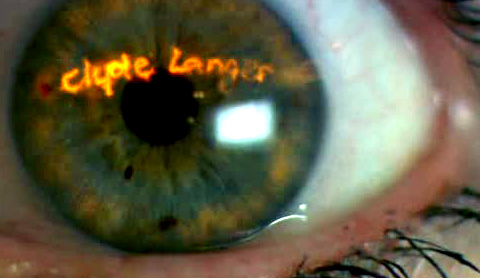Template:Transmat:SJA: Difference between revisions
From Tardis Wiki, the free Doctor Who reference
No edit summary |
No edit summary |
||
| Line 11: | Line 11: | ||
| 8 = {{feature|title=Eye of the Gorgon (TV story)|image=Eye of the Gorgon (2)|lead='''''Eye of the Gorgon''''' was eventual ''SJA'' [[producer]] [[Phil Ford]]'s first effort in the [[DWU]]. Like many of his later efforts, it contained a strong central message in addition to the relatively fantastical elements common to [[DWU]] narratives. In this case, the piece centred on the effects of [[Alzheimer's disease]], and how young people might interact with an older person suffering from the condition. Like many stories of the [[Barry Letts]] and [[Philip Hinchcliffe]] [[producer]]ships on ''[[Doctor Who]]'', it attempted to explain [[Earth]] myths through scientific rationalism. In this case, the legend being demystified was that of the [[Gorgon]], a character from [[Greek]] mythology.}} | | 8 = {{feature|title=Eye of the Gorgon (TV story)|image=Eye of the Gorgon (2)|lead='''''Eye of the Gorgon''''' was eventual ''SJA'' [[producer]] [[Phil Ford]]'s first effort in the [[DWU]]. Like many of his later efforts, it contained a strong central message in addition to the relatively fantastical elements common to [[DWU]] narratives. In this case, the piece centred on the effects of [[Alzheimer's disease]], and how young people might interact with an older person suffering from the condition. Like many stories of the [[Barry Letts]] and [[Philip Hinchcliffe]] [[producer]]ships on ''[[Doctor Who]]'', it attempted to explain [[Earth]] myths through scientific rationalism. In this case, the legend being demystified was that of the [[Gorgon]], a character from [[Greek]] mythology.}} | ||
| 9 = {{feature|title=Whatever Happened to Sarah Jane? (TV story)|image=WHTSJ|lead='''''Whatever Happened to Sarah Jane?''''' was a critical episode of ''[[The Sarah Jane Adventures|SJA]]'' that explored Sarah's teenaged life in the [[1960s]] and at the same time introduced the series' main recurring enemy. Called "[[the Trickster]]" this enigmatic, hood-wearing baddie was revealed to be intent on causing chaos in what ''[[Doctor Who]]'' considers to be the "[[Web of Time]]". Perhaps made possible only because the [[Time Lord]]s were written out of the main series, this creature established himself as intent on tempting Sarah Jane and those around them to make different choices in their lives — choices that would end up destroying the fabric of time itself. In this story, Sarah came extraordinarily close to losing her entire existence, and was entirely dependent on [[Maria Jackson]] for bringing her back. Thus, this story had a markedly different feel to later episodes. As in ''[[Invasion of the Bane (TV story)|Invasion of the Bane]]'' and other Maria episodes, her relationship to [[Alan Jackson|her father]] was critical, and given much more screen time than would be the usual case with [[Rani Chandra|Rani]] and her dad. }} | | 9 = {{feature|title=Whatever Happened to Sarah Jane? (TV story)|image=WHTSJ|lead='''''Whatever Happened to Sarah Jane?''''' was a critical episode of ''[[The Sarah Jane Adventures|SJA]]'' that explored Sarah's teenaged life in the [[1960s]] and at the same time introduced the series' main recurring enemy. Called "[[the Trickster]]" this enigmatic, hood-wearing baddie was revealed to be intent on causing chaos in what ''[[Doctor Who]]'' considers to be the "[[Web of Time]]". Perhaps made possible only because the [[Time Lord]]s were written out of the main series, this creature established himself as intent on tempting Sarah Jane and those around them to make different choices in their lives — choices that would end up destroying the fabric of time itself. In this story, Sarah came extraordinarily close to losing her entire existence, and was entirely dependent on [[Maria Jackson]] for bringing her back. Thus, this story had a markedly different feel to later episodes. As in ''[[Invasion of the Bane (TV story)|Invasion of the Bane]]'' and other Maria episodes, her relationship to [[Alan Jackson|her father]] was critical, and given much more screen time than would be the usual case with [[Rani Chandra|Rani]] and her dad. }} | ||
| 10 = {{feature|title=Clani|image=Clani celebrate|lead='''Clani''' was a shipping term used by fans of ''[[The Sarah Jane Adventures]]''. It described a proposed romantic relationship between [[Clyde Langer]] — or '''Cla''' — and [[Rani Chandra]] — or '''Ni'''. Though many "ships" in fandom go ignored by the show's producers, this one was actually recognised by writer [[Gareth Roberts]] in his script for what became the final episode, ''[[The Man Who | | 10 = {{feature|title=Clani|image=Clani celebrate|lead='''Clani''' was a shipping term used by fans of ''[[The Sarah Jane Adventures]]''. It described a proposed romantic relationship between [[Clyde Langer]] — or '''Cla''' — and [[Rani Chandra]] — or '''Ni'''. Though many "ships" in fandom go ignored by the show's producers, this one was actually recognised by writer [[Gareth Roberts]] in his script for what became the final episode, ''[[The Man Who Never Was]]''. In that story, [[Luke Smith|Luke]] was said to have originated the term while he was away studding at [[University of Oxford|Oxford]]. The brevity of the term proved useful for [[Morse code]] messages with [[Mr Smith]] when the duo were undercover investigating the new [[SerfBoard]] [[computer]].}} | ||
| 11 = {{feature|title=|image=|lead=}} | | 11 = {{feature|title=|image=|lead=}} | ||
| 12 = {{feature|title=|image=|lead=}} | | 12 = {{feature|title=|image=|lead=}} | ||
Revision as of 03:58, 10 October 2013
The Curse of Clyde Langer was a Sarah Jane Adventures story from its final series. Atypical for its downbeat ending, Langer gave additional definition to its titular character, and therefore emphasised actor Daniel Anthony's acting abilities. It was notable for its mature yet sensitive handling of the difficult issue of child homelessness, while simultaneously introducing romance to the hitherto completely chaste series. So well-received was the script that it was considered 2012's best script for children's television by the Writer's Guild of Great Britain.

